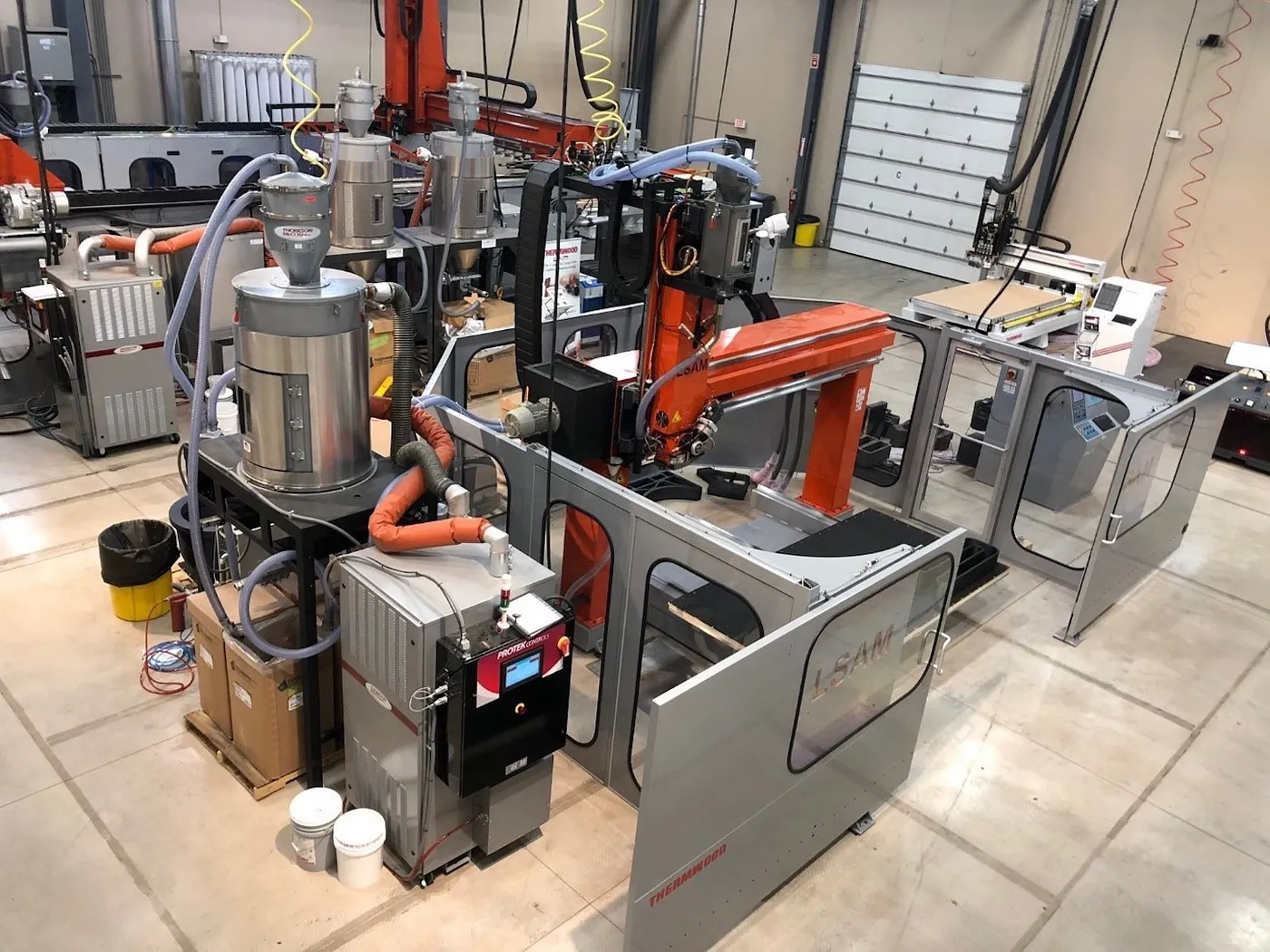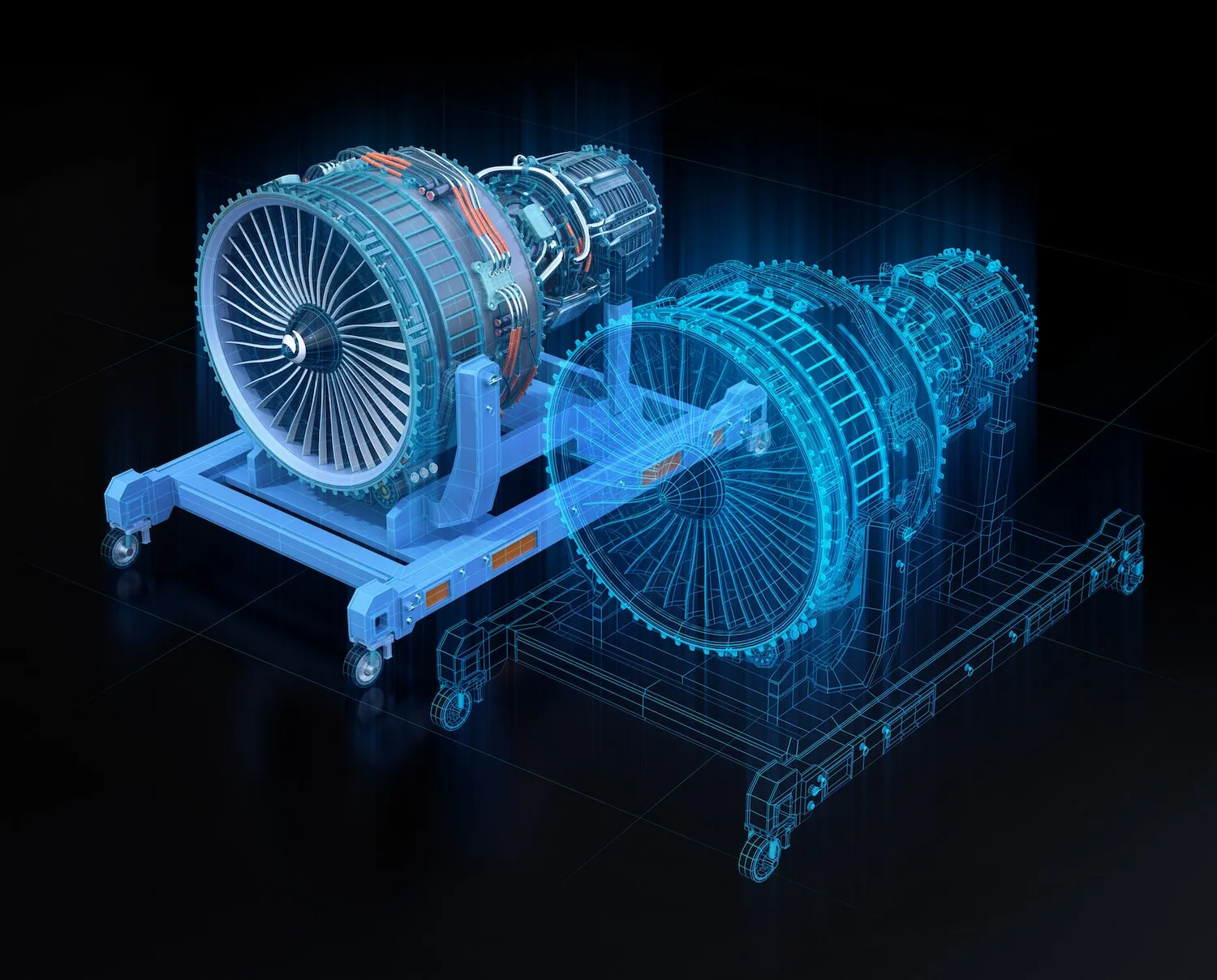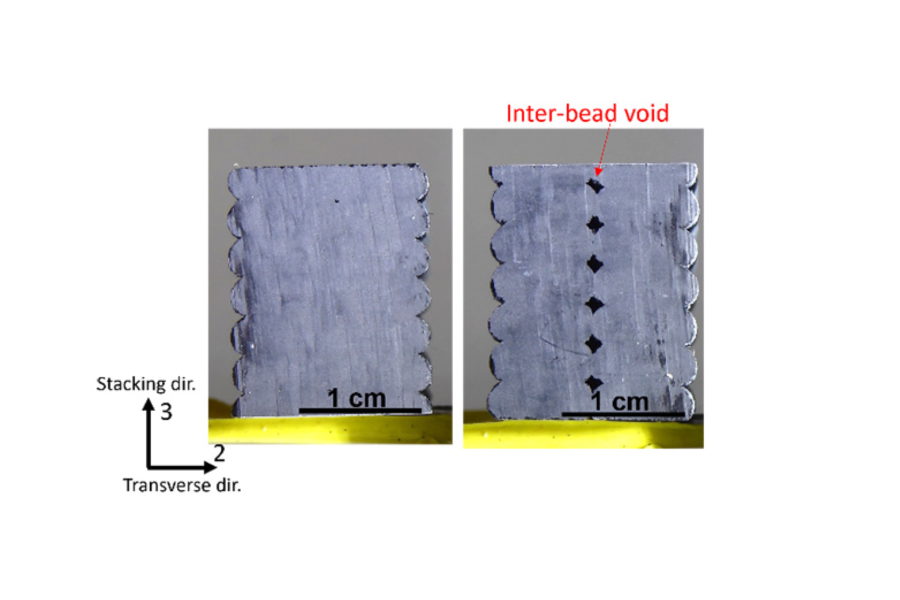The aircraft design and manufacturing process is unsustainably long, says R. Byron Pipes, director of Purdue’s Composites Manufacturing and Simulation Center (CMSC). He believes manufacturers and regulators need to embrace a new approach if the industry expects to reduce its impact on climate change.
"Thousands of airplanes are flying every day that produce CO2. If you’ve got to decarbonize, you can’t afford to keep them going," says Pipes, who is also the John Bray Distinguished Professor of Engineering, in a joint appointment between the schools of Aeronautics and Astronautics, Chemical Engineering and Materials Engineering.
"The airplanes we’ve got today, we’ll have to replace them all in less than 30 years, and build even more to meet growing demand for travel. This is an impressive challenge," he says.
To reduce aircraft mass and improve efficiency, manufacturers have taken to using composite materials like carbon fiber. Pipes says a major drawback is that those composite parts can take days, or sometimes weeks, to manufacture.
The ongoing work he oversees at the CMSC includes manufacturing techniques like stamping and 3D printing of composite materials. Pipes and his cadre of roughly 30 graduate students also contribute to advanced assembly analysis technology that promises to overhaul the aircraft design process.
Pipes believes this is imperative if the industry hopes to build enough advanced aircraft to meet the demands of the ongoing climate crisis. "This isn’t just about making airplanes faster or lighter, this is about whether or not we’ll have an industry. So the question is, how fast can we develop these new technologies to replace the planes we’ve got?"
"The airplanes we’ve got today, we’ll have to replace them all in less than 30 years, and build even more to meet growing demand for travel. This is an impressive challenge."
—R. Byron Pipes, director of Purdue’s Composite Manufacturing and Simulation Center (CMSC)
Pipes, a longtime professor and researcher of composites at Purdue, says that the technologies currently used in building modern passenger jets were invented in the mid-1960s.
"It was recipe-driven technology. The design requirements say that you must follow these certain steps in this way, and that way, and that way, in order to guarantee the product performance on the other side," Pipes says.
Through the CMSC, Purdue has partnered with The Boeing Company and Dassault Systèmes to liberate the aircraft manufacturing process from this rigid approach. Pipes says the software that Boeing and Dassault co-developed, underpinned by Dassault’s 3DEXPERIENCE platform, can serve as a digital surrogate for a physical object.
Using systems like these, engineers can analyze a whole vehicle’s operating conditions and behaviors through its entire lifecycle, even before a single physical component is built.

Purdue's Composites Manufacturing & Simulation Center (CMSC), where the Thermwood Large Scale Additive Manufacturing laboratory, pictured, produced the Las Vegas Raiders' Al Davis Memorial Torch — the world's tallest 3D-printed structure.
"We’re moving away from document-based engineering and to model-based systems engineering," Pipes says. "An airplane becomes something where everyone can make changes to a digital representation, which puts a lot more information at everyone’s fingertips. Competencies can simultaneously participate in developing the knowledge required to make decisions."
This yields tremendous opportunities to optimize the final product because the experimentation cost in the digital world is so low. But a simulation is only as good as the data models it uses. Garbage in, garbage out. That’s why Boeing and Dassault approached Purdue for its long-standing reputation in composites research — underpinned by Pipes’ own half-century of experience with these materials — to help refine their digital surrogate.
"The software experts are not the composites experts," Pipes says. "Composites is not taught in every aerospace engineering department either, but Purdue has been in the research part of it from the very beginning. I’d say our expertise in that world even exceeds that of Boeing because they’ve lost the generation that developed the 787 — they’ve all retired.
"My team is acting as the glue between Boeing and Dassault. Boeing uses some of the tools on the Dassault Systèmes platform, but they utilize our knowledge as worldwide experts in the composites field."
The trick when it comes to surrogates for aircraft is in developing a high level of trust in that system — trust with manufacturers, regulators and their future passengers.
"An unvalidated simulation is not worth anything," he says. "The FAA always asks questions. Their primary focus is safety, as it should be. I believe we can show that physical testing can be replaced with virtual testing, with virtual performance barriers, and still give that same level of safety."

Pasita Pibulchinda (BSAAE ’19, MSAAE ’21), has been working on one of the facets of building that trust. With Pipes as faculty advisor for her doctoral work, she is glad to be part of the team at CMSC.
"I got into structures through my senior project as an undergraduate. We built a fixed-wing UAV, which got me interested in composites," she says. "I was also an intern and an undergraduate assistant here, and I like I the environment. They mentor me well, and we have a habit of helping each other out."
Pibulchinda has been supporting the development of composite models through ADDITIVE3D, a physics-based additive-manufacturing simulation program developed at Purdue within Dassault’s digital-twin platform.
"ADDITIVE3D lets us virtually 3D-print the part to predict any residual stress or shape distortion that can happen during manufacture. We can also go back to modify the 3D model or change the 3D printer setting, then run the simulation again and see if the prediction gives a better part," Pibulchinda says.
Her work is in running simulations with many different parameters, like bead sizes, print speeds and nozzle heights, and comparing the simulation results to the structural properties of real-life prints made using those same parameters.

"I am modeling the phenomena that occur during the deposition process, such as deformation and heat transfer of the composites," Pibulchinda says. "This will help users to decide printer settings systematically and scientifically rather than by trial and error, which can result in a waste of time and material."
Pibulchinda’s research will apply directly to the Thermwood Large Scale Additive Manufacturing (LSAM) printer at the CMSC – but crucially, her data will also improve the capabilities of the ADDITIVE3D system.
Pipes’ team followed a similar path to develop FORM3D, which replicates a composite stamping process and analyzes the virtual product for properties that are important for structural aircraft components. The continuing work on data models will assist with proving out the digital twins of these manufacturing processes.
That, Pipes says, will break the doors open for how these tools can be used.
"Once we’ve got trust, we can use this with all sorts of applications."